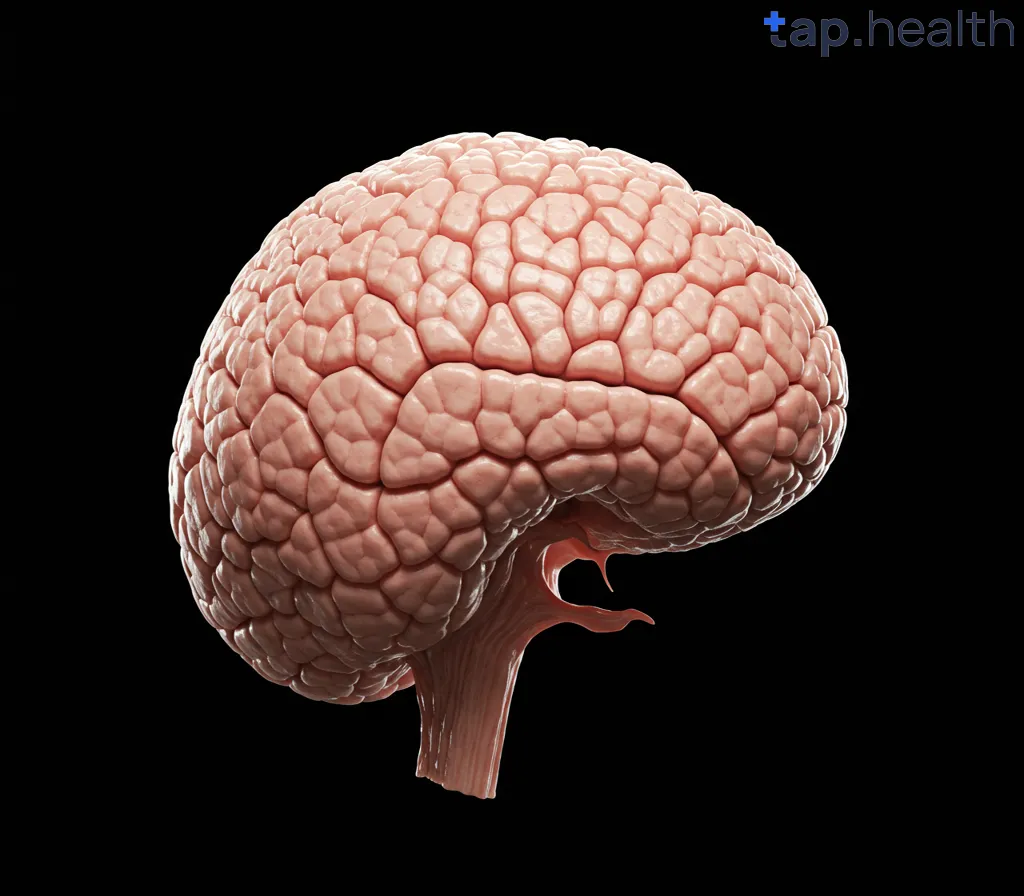A calcified granuloma in the brain is a condition that may sound concerning at first, but is it truly dangerous? Many individuals diagnosed with a calcified granuloma may wonder about the risks involved and whether this condition can lead to severe complications. The short answer is that a calcified granuloma in the brain is generally not dangerous for most people. However, like any health condition, it requires proper understanding, monitoring, and management.
In this article, we will explore what a calcified granuloma in the brain is, its causes, symptoms, diagnosis, and whether it poses any danger to your health. Additionally, we’ll address the treatment options available and answer some frequently asked questions to help you understand this condition better.
What is a Calcified Granuloma in the Brain?
A calcified granuloma is a small area of tissue in the brain that has become hardened due to the accumulation of calcium deposits. Granulomas are small clusters of inflammatory cells that form in response to infections, injuries, or foreign substances. Over time, these granulomas can become calcified as calcium builds up in the affected area.
In the brain, a granuloma can form due to infections like tuberculosis (TB), fungal infections, or parasitic infections, or as a result of an immune response to previous infections. Once the granuloma forms, the body may deposit calcium to “seal off” the area, resulting in a calcified lesion.
Types of Granulomas
- Infectious Granulomas: Caused by infections like tuberculosis, fungal infections, or parasitic diseases.
- Non-Infectious Granulomas: These can be formed in response to other conditions like autoimmune disorders or previous injuries.
Causes of Calcified Granuloma in the Brain
The causes of a calcified granuloma are often linked to the body’s immune response to an infection or foreign substance. Common causes include:
1. Tuberculosis (TB)
One of the most common causes of calcified granulomas in the brain is tuberculosis. TB is an infection caused by Mycobacterium tuberculosis that can affect various parts of the body, including the brain. If the infection is not fully treated, it can cause the formation of granulomas, which may later become calcified.
2. Fungal Infections
Certain fungal infections, like histoplasmosis or coccidioidomycosis, can lead to the formation of granulomas in the brain. These infections are typically more common in certain geographic regions, and the granulomas formed by these infections can become calcified over time.
3. Parasitic Infections
In some cases, parasitic infections like toxoplasmosis can cause granulomas in the brain. Toxoplasmosis is caused by the parasite Toxoplasma gondii and can lead to calcification of the granuloma, especially in individuals with weakened immune systems.
4. Autoimmune Disorders
Some autoimmune disorders can also lead to the formation of granulomas, though these are less common. Conditions like sarcoidosis, which causes inflammation in various organs including the lungs and brain, can result in granulomas that may calcify.
5. Previous Brain Injuries or Infections
A calcified granuloma can also form as a result of a past brain injury or infection. For example, if the brain experiences an injury or infection that leads to inflammation, a granuloma may form as part of the healing process. Over time, calcium may accumulate in the area, leading to a calcified granuloma.
Are Calcified Granulomas in the Brain Dangerous?
In most cases, calcified granulomas in the brain are not dangerous. They often don’t cause symptoms or interfere with brain function. Many people live with calcified granulomas without ever knowing they have them because they don’t produce noticeable symptoms. However, whether a calcified granuloma is dangerous can depend on several factors.
Factors That Affect the Danger of a Calcified Granuloma
- Location: If the granuloma is located in a critical area of the brain, it may interfere with brain function. However, most calcified granulomas are small and located in areas where they do not cause significant issues.
- Size: Large granulomas may exert pressure on surrounding tissues, potentially causing symptoms.
- Underlying Causes: If the calcified granuloma is due to an untreated infection (e.g., tuberculosis or fungal infections), there may be other health risks associated with the infection itself.
Common Symptoms Associated with Calcified Granulomas
In many cases, calcified granulomas don’t cause symptoms. However, if they do, the symptoms are usually mild and can include:
- Headaches: A common symptom if the granuloma is located in an area of the brain that causes pressure.
- Seizures: In rare cases, large calcified granulomas may lead to seizures.
- Vision Problems: If the granuloma is located near the visual processing centers of the brain, it could cause visual disturbances.
- Neurological Deficits: Rarely, a calcified granuloma may lead to weakness, speech problems, or difficulty with coordination.
Risk of Complications
While the risk is generally low, the following complications can occur in rare cases:
- Infection Reactivation: In cases where the granuloma is due to an infection like tuberculosis, there’s a slight risk that the infection could reactivate.
- Hydrocephalus: In some cases, large granulomas can obstruct the flow of cerebrospinal fluid, leading to hydrocephalus (fluid buildup in the brain).
- Brain Damage: In rare cases, if the granuloma is large or located in a sensitive area, it could cause permanent brain damage.
How Are Calcified Granulomas Diagnosed?
Diagnosing a calcified granuloma in the brain usually involves imaging tests like:
1. CT Scan (Computed Tomography)
A CT scan is one of the most common imaging techniques used to detect calcified granulomas. It can reveal the size and location of the calcification. A CT scan is often the first step when doctors suspect a granuloma in the brain.
2. MRI (Magnetic Resonance Imaging)
An MRI provides a more detailed image of the brain and can help identify the extent of the granuloma and its effects on surrounding brain tissue. MRI is particularly useful for evaluating soft tissue structures and detecting any abnormalities caused by the granuloma.
3. Blood Tests
In some cases, doctors may order blood tests to check for signs of infection, such as tuberculosis, fungal infections, or parasitic diseases, which could have caused the granuloma.
Treatment Options for Calcified Granulomas
Treatment for calcified granulomas depends on the underlying cause and whether the granuloma is causing symptoms. In most cases, no treatment is needed, especially if the granuloma is small and asymptomatic. However, if the granuloma is linked to an active infection or is causing health problems, treatment may be required.
1. Antibiotics or Antifungal Medications
If the granuloma is due to an active infection (such as tuberculosis or fungal infections), antibiotics or antifungal medications may be prescribed to treat the infection. Treatment of the underlying infection may help prevent further complications.
2. Anti-inflammatory Medications
In cases where inflammation is involved, anti-inflammatory drugs may be used to reduce swelling and irritation around the granuloma.
3. Surgical Removal
If the granuloma is large, symptomatic, and causing significant problems, surgery may be considered to remove the granuloma. However, this is very rare and typically only recommended if the granuloma is causing severe neurological symptoms or other complications.
Can Calcified Granulomas Be Prevented?
Since most calcified granulomas are caused by infections or immune responses, preventing them largely depends on avoiding the underlying causes. Here are a few general tips for reducing the risk:
1. Vaccination and Early Treatment for Infections
- Vaccinating against tuberculosis (TB) and other infections can lower the risk of granuloma formation in the brain.
- Seeking prompt medical treatment for infections can prevent them from developing into serious conditions that may lead to granuloma formation.
2. Regular Checkups for People at Risk
Individuals with a history of infections like tuberculosis or fungal infections should have regular checkups and monitoring to detect granulomas early.
FAQ on Is Calcified Granuloma in Brain Dangerous?
1. Are calcified granulomas in the brain dangerous?
Most calcified granulomas in the brain are not dangerous. They typically don’t cause symptoms and are often found incidentally during imaging tests. However, large granulomas or those caused by active infections may require medical treatment.
2. Can a calcified granuloma cause seizures?
In rare cases, a calcified granuloma can cause seizures if it is located in an area of the brain that controls electrical activity. However, this is not common.
3. How is a calcified granuloma treated?
Treatment depends on the underlying cause. If the granuloma is due to an infection, antibiotics or antifungal medications may be prescribed. Surgery may be necessary in rare cases if the granuloma is large or symptomatic.
4. What causes a calcified granuloma in the brain?
Calcified granulomas are typically caused by infections like tuberculosis, fungal infections, or parasitic diseases. They can also result from an immune response or past brain injuries.
5. How is a calcified granuloma diagnosed?
Diagnosis is typically done using a CT scan or MRI, which can reveal the size and location of the calcification. Blood tests may also be done to check for underlying infections.
Conclusion
In most cases, a calcified granuloma in the brain is not dangerous. These growths are typically harmless and asymptomatic, often requiring no treatment. However, if a granuloma is due to an active infection or is causing neurological symptoms, it may require intervention. Early detection and monitoring are important for managing potential risks, and treatment options are available if necessary. If you or someone you know has been diagnosed with a calcified granuloma, it’s essential to work with a healthcare provider to ensure proper management and care.



